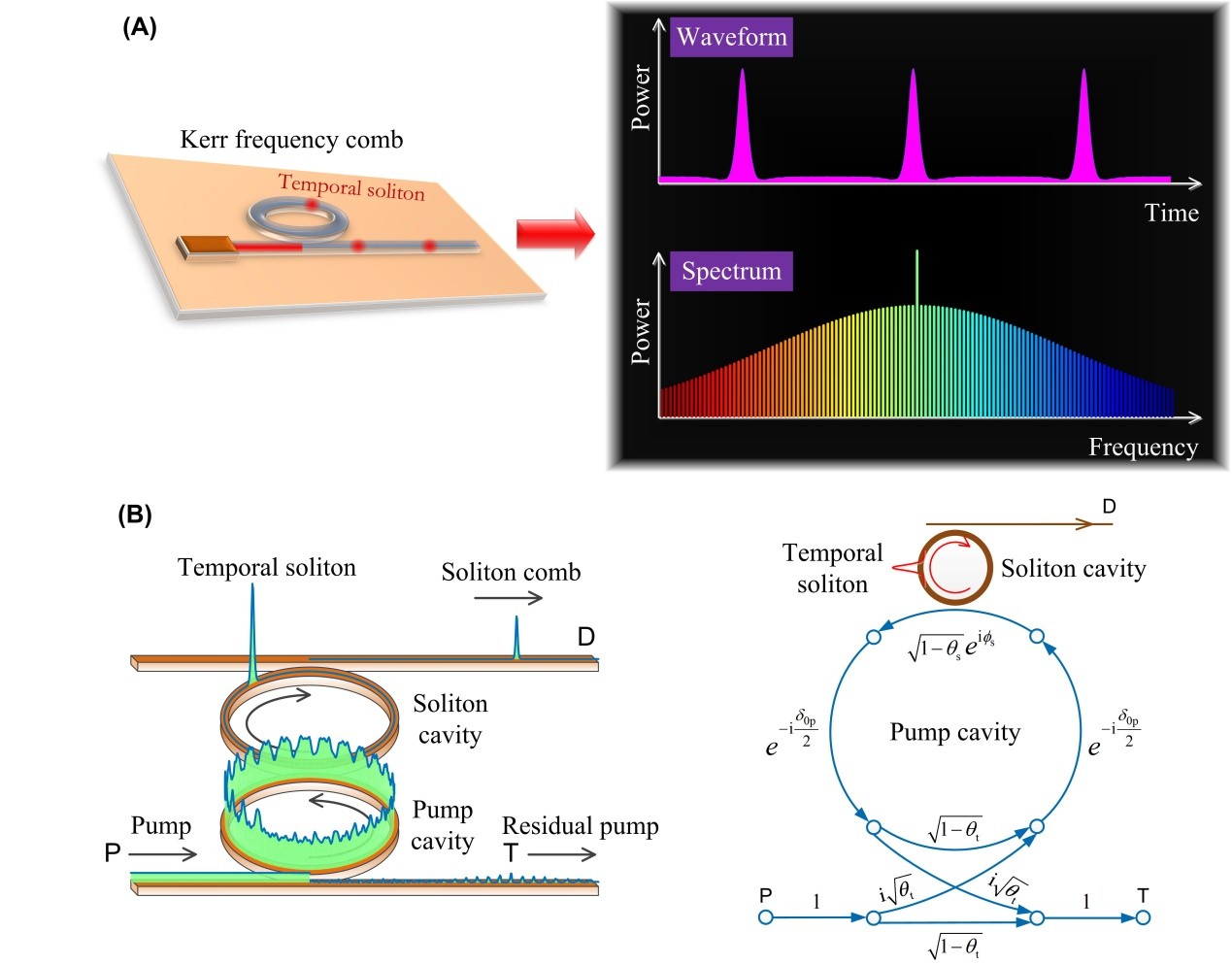Towards Super-efficient Kerr Optical Frequency Combs

Figure. (A) Illustration of chip-scale Kerr frequency combs. (B) Super-efficient temporal solitons in mutually coupled optical cavities.
Researchers from Tsinghua University discovered a kind of coupled-cavity temporal solitons that show significantly higher energy conversion efficiency compared to traditional single-cavity ones. Their findings provide a new promising way to achieve super-efficient Kerr optical frequency combs. The results were online published on Nature Photonics May 13, 2019 (URL: http://dx.doi.org/ 10.1038/s41566-019-0436-0).
The basic principle of Kerr comb generation is converting a single-frequency laser to a large number of coherent frequency lines through four-wave mixing in a nonlinear optical resonator. In the time domain, the frequency comb usually exhibits a series of ultrashort pulses called temporal solitons. Kerr comb generation has been regarded as a revolutionary technology for its capability to achieve ultrahigh pulse repetition rate and chip-level integration. However, soliton Kerr combs generally have very poor energy conversion efficiency, namely only a tiny fraction of the pump laser power can be converted to the comb lines. The typical values demonstrated to date are merely 2~3 percent. Such low efficiency has prevented the practical application of Kerr combs.
Inspired by the classical impedance matching theory in electronics, the Tsinghua research team proposed a novel scheme consisting of two mutually coupled optical cavities for high-efficiency Kerr comb generation. The soliton circulates in one cavity, whereas the other cavity recycles the pump power to maximize the conversion efficiency. They developed a set of coupled nonlinear Schrodinger equations to describe the optical field evolution in the coupled cavities and found a solution of super-efficient temporal solitons. In proof-of-concept experiments performed with optical fiber cavities, nearly 100% of the pump power was successfully recycled, breaking the efficiency limit of a traditional single cavity. The method can be transported to miniature micro-resonators that share a similar physical model as fiber cavities. High-efficiency chip-scale Kerr combs could greatly facilitate a large number of applications, such as microwave photonics, optical atomic clocks, high-capacity optical communications, and spectroscopy.
The collaborating team at Tsinghua is led by Dr. Xiaoxiao Xue, Dr. Xiaoping Zheng and Dr. Bingkun Zhou. The work was supported in part by the National Natural Science Foundation of China ( Grant numbers: 61690191, 61690192, and 61420106003).
Contact Us

National Natural Science Foundation of China
Add: 83 Shuangqing Rd., Haidian District, Beijing, China
Postcode: 100085
Tel: 86-10-62327001
Fax: 86-10-62327004
E-mail: bic@nsfc.gov.cn
